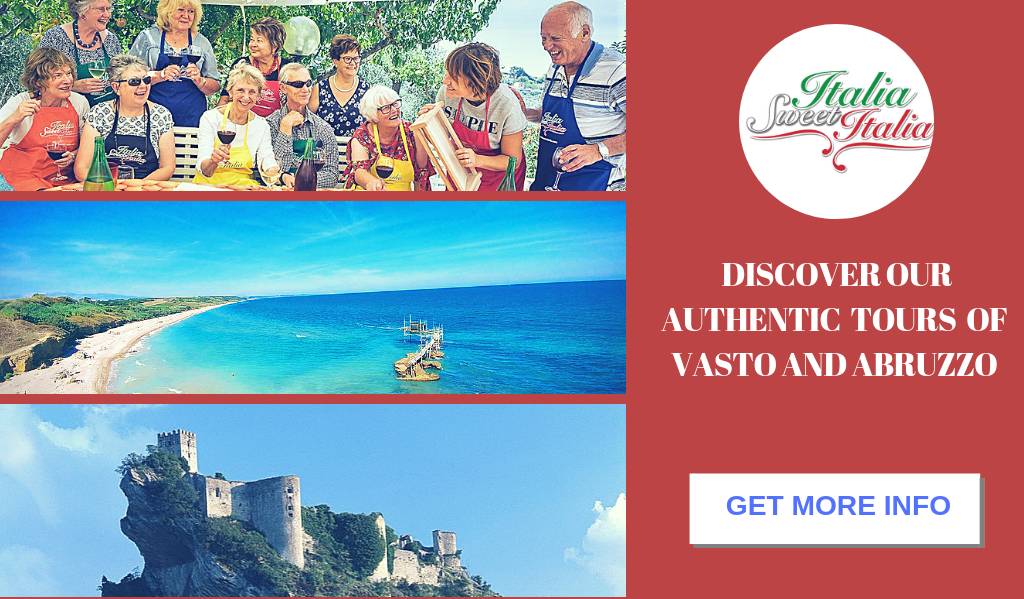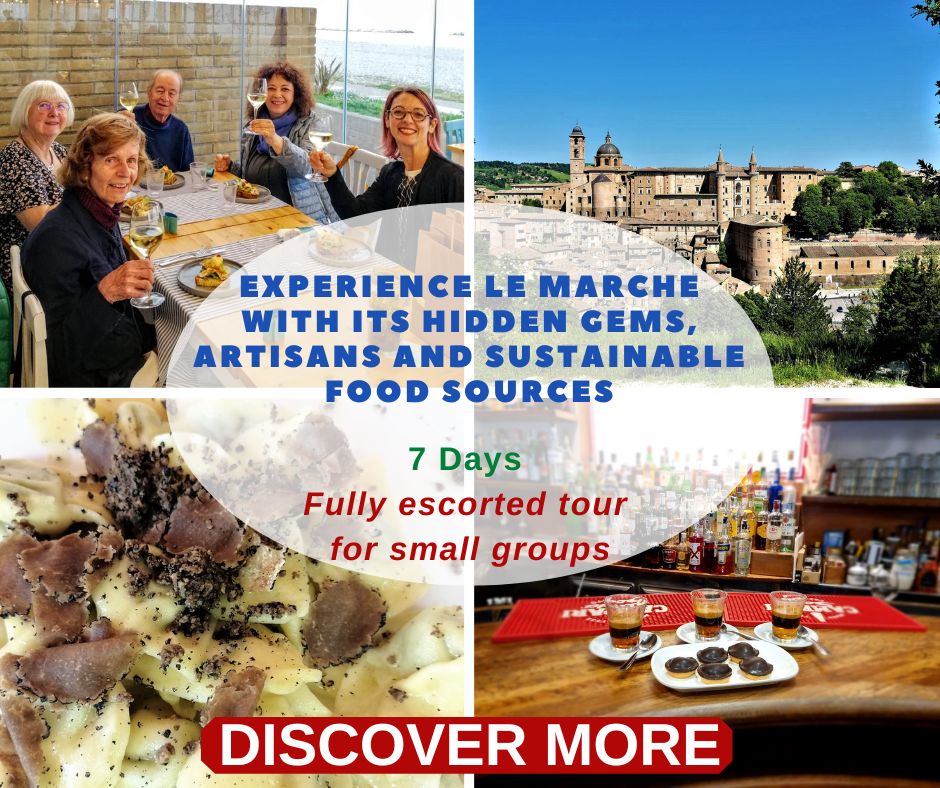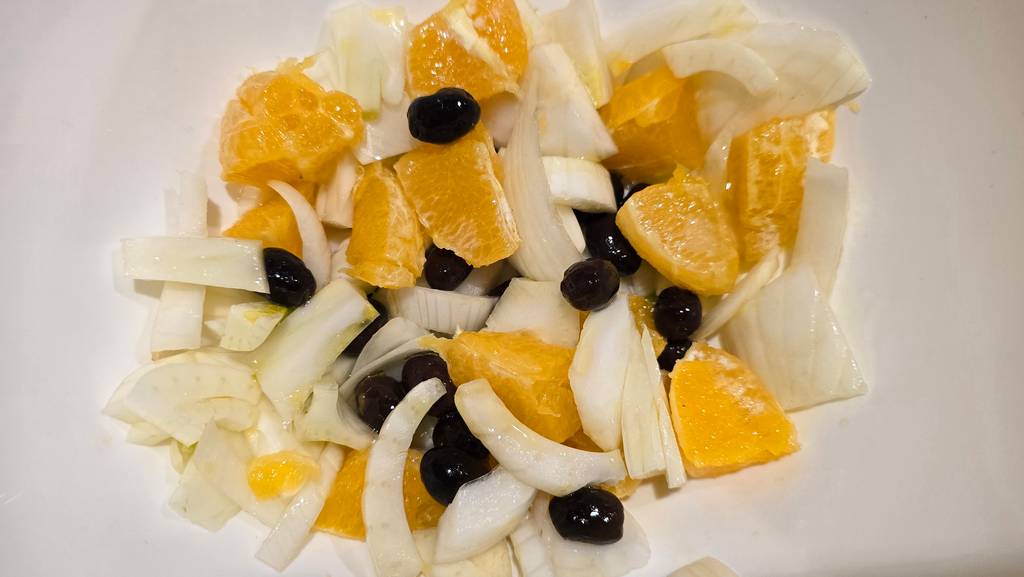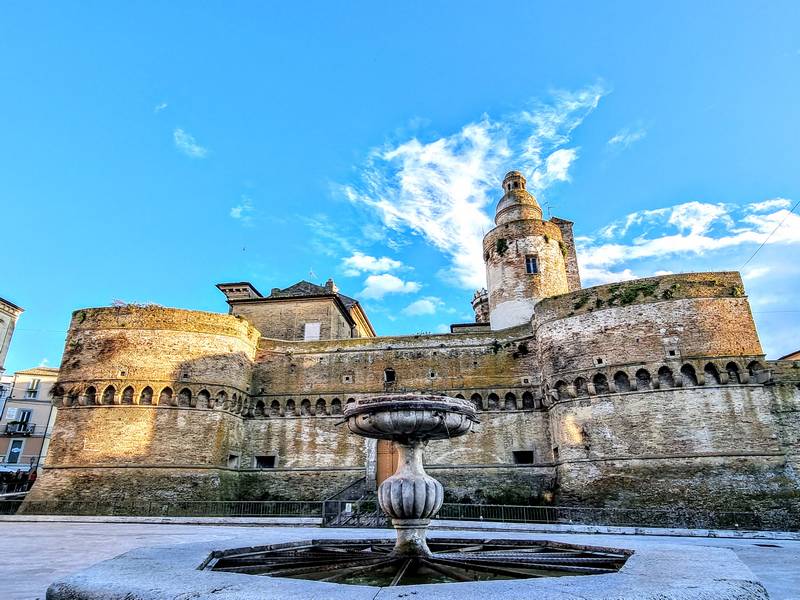Brodetto Fanese and Brodetto alla Vastese: Two Traditions, Two Identities
Brodetto is one of the most representative culinary specialties of Italy’s Adriatic coast, but as often happens with Italian gastronomy, each region, city, and even family has its own version of this dish.
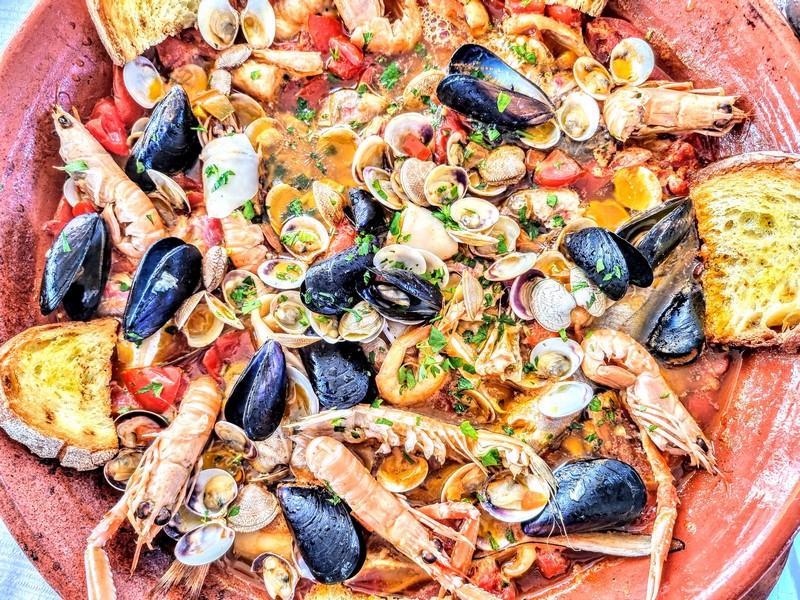
Brodetto alla Vastese is my favorite dish.
When I lived away from Vasto, every time I returned home, my mother never asked me what dish I preferred for our first meal together; she already knew it would be “brodetto”.
This dish, which encapsulates all the tradition and flavors of the sea, symbolized my return home.
Perhaps this emotion is one of the things I miss the most when I’m away from Vasto. Longing for that moment, that dish, to eat while watching the sea, from my parents’ house.
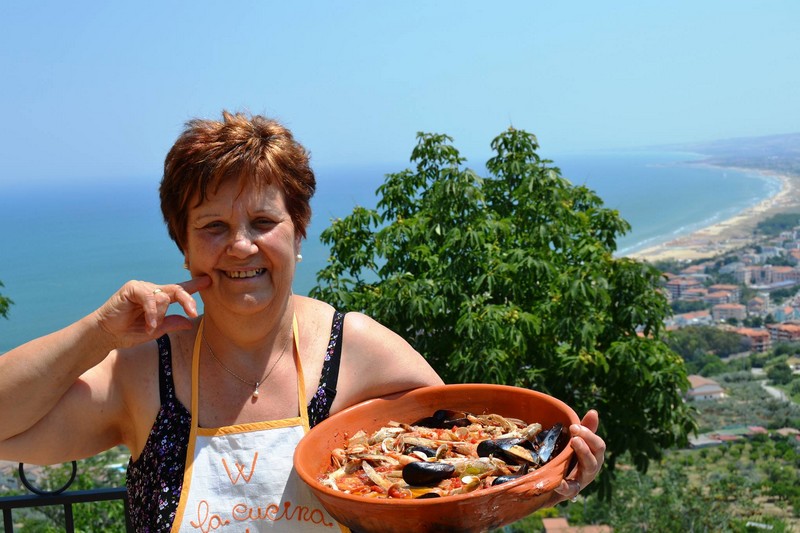
Two particularly renowned variants of this fish dish are the Brodetto Fanese, in the Marche region, and the Brodetto alla Vastese, in Abruzzo.
The Brodetto Fanese is celebrated every year at the Brodetto Festival, and it often competes alongside the Brodetto alla Vastese, with both dishes frequently taking top spots or winning awards.
While the base of the dish remains the same—a fish soup—the differences between these two recipes reflect the histories, cultures, and local resources of these two regions.
Fano, located on the northern coast of the Marche, is a historic town with roots dating back to Roman times and serves as the base for our tour in the Marche region.
Known for its vibrant fishing activities and famous Carnival, Fano’s cuisine is deeply connected to the sea.
Its brodetto is a delicacy that our travelers can prepare and taste during our Experience Le Marche tour, in its most authentic form.
Vasto, on the other hand, is a beautiful coastal town in southern Abruzzo, perched on a promontory with breathtaking views of the Adriatic.
Vasto is not only my hometown but also the base for our tours in Abruzzo.
Rich in history, Vasto is also known for the beauty of its beaches and a cuisine that showcases the best of local marine resources.
Here, the Brodetto alla Vastese, known as “Lu Vrudatt” in the local dialect, emerges—a dish with a strong personality that has its roots in the farming and fishing traditions of the area.
Those visiting Abruzzo and participating in one of our tours will have the opportunity to sample this local specialty, highlighting the flavors of fresh Abruzzo fish.
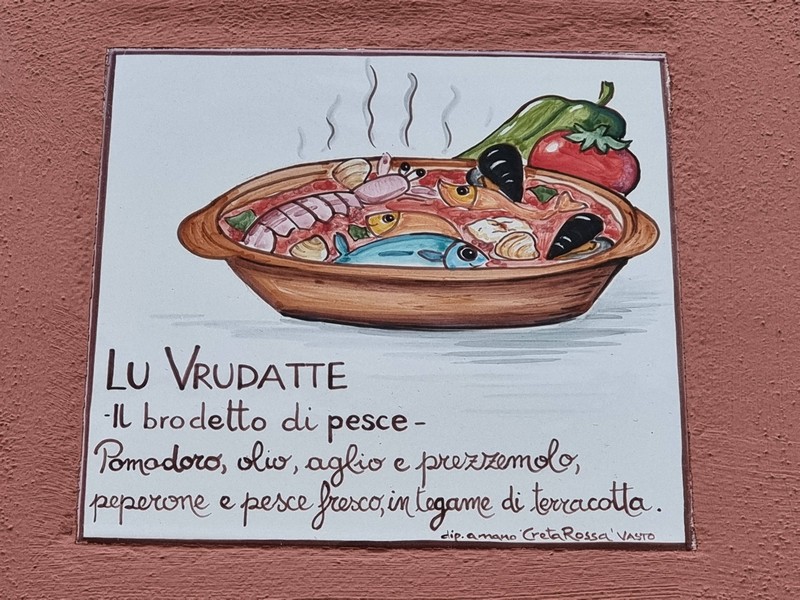

Despite their common connection to the Adriatic tradition, the differences between Brodetto Fanese and Brodetto alla Vastese are significant, reflecting the cultural and culinary diversities of the two regions.
Let’s explore the main differences between the fanese and vastese brodetto:
Ingredients and Types of Fish
One of the main differences between the Brodetto Fanese and that alla Vastese lies in the variety of fish used. Both versions originated as poor dishes, prepared with the fish that fishermen had available, but the marine varieties vary based on the area.
Brodetto Fanese: The fanese brodetto is distinguished by the use of various fish typical of the Adriatic, such as scorpionfish, dogfish, spad fish, turbot, John Dory, weever, bogue, cuttlefish, and clams. The key ingredient in this recipe is the skate, considered the king fish of the Marche brodetto. The abundance of rocky and bottom fish in the area contributes to giving the dish a rich and robust flavor.
Brodetto alla Vastese: The vastese brodetto also uses fresh local fish, but with a particular emphasis on small, easily available fish, such as weever, scorpionfish, mullet, hake, and also shellfish like mantis shrimp ( also known as panocchie or canocchie in soma cases) and prawns. In this case, the selection tends to be broader in terms of small shellfish typical of the shallower waters of the southern Adriatic.
Use of Tomato
One of the most marked differences between the two versions of brodetto is the amount and type of tomato used.
Brodetto Fanese: in the fanese variant, the use of tomato is moderate. Tomato is used only to provide a slight coloration and should not overpower the flavor of the fish. A soup with a more amber color is preferred, where the taste of the fish is the absolute protagonist. This aspect recalls the ancient tradition of fishermen who, often due to a lack of expensive ingredients, used only a bit of vinegar or white wine and a touch of tomato to acidify the dish. In addition, a fish broth made with fish bones is often used, and especially, passata (tomato sauce) is a key ingredient.
Brodetto alla Vastese: Conversely, the Vastese brodetto uses a significantly larger amount of tomato, giving the dish a characteristic intense red color. This is due to the use of ripe fresh tomatoes, particularly the mezzotempo variety. In winter, the pieces of tomato used are those preserved in jars from the summer harvest. The abundance of tomato contributes to a sweeter flavor and a richer taste. The more pronounced presence of tomato is a distinctive feature of the Abruzzese brodetto compared to the Marche version. Additionally, plenty of extra virgin olive oil is used – a key element in the dish. My mother always says that the fish should “swim” in the oil (we produce our own, so we never hesitate to use a generous amount!).
Use of Peppers and Spices
Sweet pepper is another element that distinguishes the Brodetto of Vasto from that of Fano.
Brodetto Fanese: In the fanese version, no peppers are used. Spices are limited, and a simple seasoning of parsley, garlic, white wine or vinegar, and extra-virgin olive oil is preferred. The goal is to enhance the natural flavor of the fish without masking it with excessive spices or aromas.
Brodetto alla Vastese: Here, sweet pepper is a fundamental ingredient. Both green and red peppers are used, giving the vastese brodetto a sweet flavor as well as a more varied color. This touch makes the vastese version more vibrant on the palate compared to the fanese one. In some versions, a touch of hot pepper is added, although I personally don’t prefer it, as it could overpower the delicate flavor of the fish.
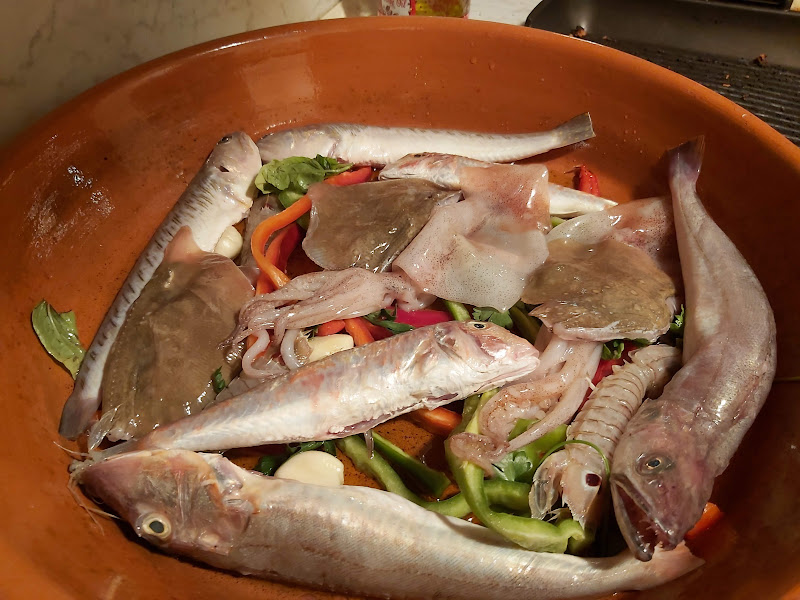
Cooking Method
The cooking method also varies slightly between the two versions.
- Brodetto Fanese: In Fano, the brodetto is slowly cooked in a large, shallow pot, allowing the flavors to gently blend. The fish is added according to its texture to prevent certain varieties from overcooking. The dish often begins with a sauté of garlic, oil, and a little tomato, followed by a splash of vinegar or white wine, and finally topped with a sprinkle of parsley.
- Brodetto alla Vastese: In Vasto, cooking starts with a sauté of sweet peppers and tomato in a terracotta pot (which is used for even cooking and to keep the dish warm when served – no Vastese brodetto without terracotta). The fish is added progressively according to its cooking times, covering the brodetto with a lid and bringing it to a boil in the final minutes. This method gives the dish a firmer texture and more pronounced flavors, thanks to the combination of tomato and peppers.
Traditional Accompaniment
Both versions of brodetto are typically served with bread, but there are also differences here.
Brodetto Fanese: It is often served with toasted or homemade bread, which can be lightly rubbed with garlic and soaked in the sauce to fully appreciate the flavors of the brodetto.
Brodetto alla Vastese: The brodetto is also accompanied by bread here, but in some traditional versions, it can be served directly at the table even without.
Last information
Despite the differences between Brodetto Fanese and Brodetto alla Vastese, both dishes maintain a deep connection to the traditions of fishermen and the Adriatic Sea.
Brodetto is a dish that tells stories of families, the sea, and daily life along the coast, with its variations reflecting the cultural richness and marine biodiversity of the Italian regions.
Seafood lovers cannot miss the chance to taste both versions and appreciate the nuances and differences that make brodetto a true culinary art.
In particular, during our tours in Abruzzo, you can savor Brodetto alla Vastese directly on a traditional Trabocco, surrounded by a unique atmosphere of sea and tradition.
Join one of our immersive tours in the local communities of Marche and Abruzzo for an unforgettable experience!
Ready to travel to Abruzzo, Italy?
Get in touch today for more information about our tour. We are ready to help you choose the best options for your dream vacation!
And if you’re not quite ready to make an inquiry, sign up for our free email course to learn everything you need to know about planning a tour of Abruzzo.

